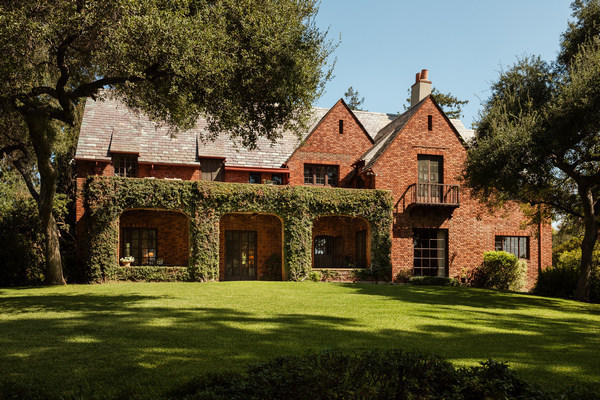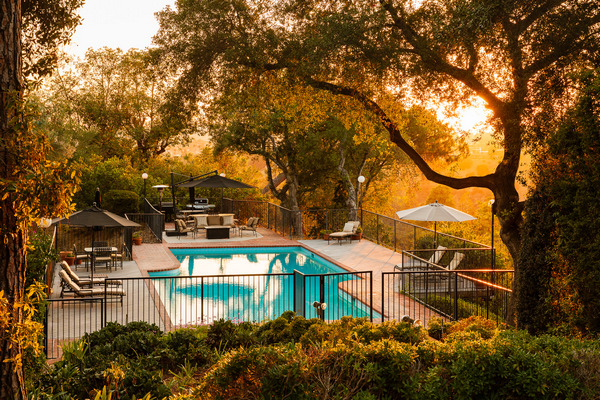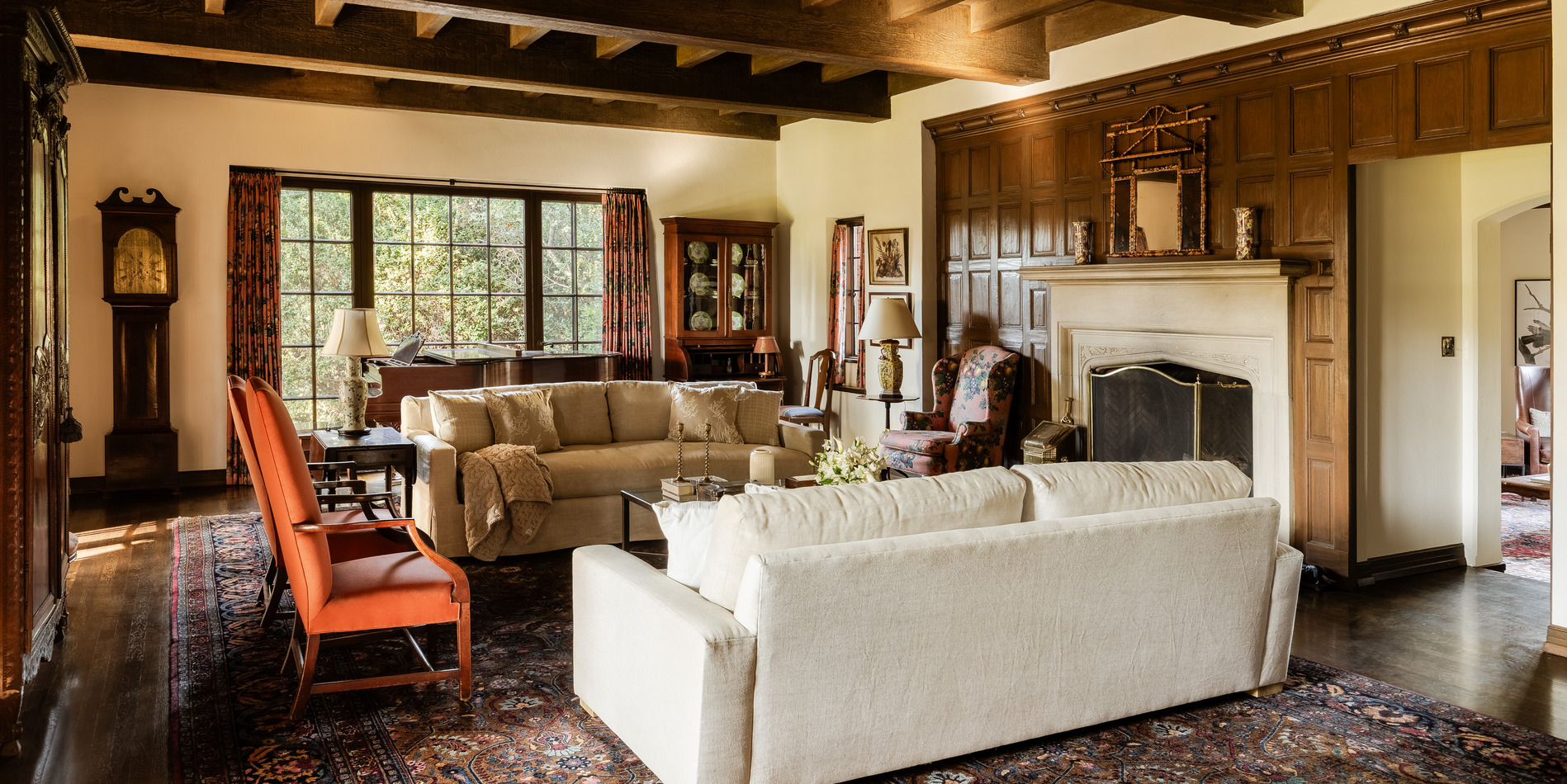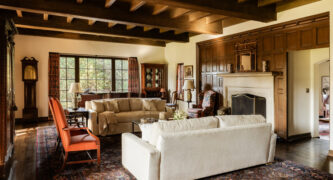
Just west of Fair Oaks Drive in southwest Pasadena, the hill lifts and then keeps lifting until the road gives way to a long motor court and a house that seems less placed than set down like a keystone. Hill House—600 Columbia Street—was completed in 1924 by Johnson, Kaufmann & Coate, and nearly everything about the construction is weight and permanence: poured concrete masquerading as timber; brick and slate; ceilings cast in molds that captured the grain of wood and then stained to complete the architectural sleight of hand. You look up and swear you see carpentry. You are, in fact, looking at stone.
Only two families have ever held the keys. The original builders kept it for half a century. The second, mechanical engineer John Joseph Fehrenbacher and his late wife, kept it for nearly another. In a city of renovations and turnover, Hill House has been a long marriage. The Brian and Fehrenbacher children grew up here; a daughter married on the lawn; Fourth of July fireworks were watched from the swimmers’ pool and spa, guests and family floating on the water as the Arroyo Seco sky exploded in light. When the Rose Bowl hosts a flyover, the B-2 moves up the arroyo’s spine and passes directly over the bluff, an accidental theater in the round.
The bluff is the point. The 4.19-acre parcel projects outward like a balcony over the city, affording startling views that run beyond Colorado Street Bridge and the Court of Appeals to the Rose Bowl and, beyond them, the San Gabriel Mountains. On winter mornings, the peaks pinken; at dusk, the arroyo pixelates into innumerable quiet, twinkling lights.

Privacy is a cornerstone of Hill House, from the terraces and the long, hedged lawns, you struggle to find a neighbor. A lighted tennis court hides in the trees, ready to host a game at the flick of a switch.
Inside, the weight of the place is elegant rather than heavy. Three fireplaces are fitted with ash chutes that drop into the basement. A butler’s pantry still holds the flatware and silverware of dinners gone by, while a modernized kitchen acknowledges modern tech.
In the den, Fehrenbacher’s collection of Native American beadwork—pieces largely predating 1900—is a quiet counterpoint to the poured-concrete cornices and leaded glass.

The building’s most dazzling party trick is a modest one-person elevator, installed in the early decades by the original owners and threaded through the house like a sleeve. It rises from the bunker-solid basement to the second floor and, when summoned, appears beneath a hinged panel with the showman’s timing of a reveal. Fehrenbacher calls it the perfect hideout for children; his grandkids likely knew it as a rocket ship.
The basement, where the ceilings and walls expose their poured forms, hosts Hill House’s most personal feat of engineering: a hand-built N scale train world, wired by Fehrenbacher over the years for a New York–based grandson who visited whenever he could. The layout glows to life on command—streetlamps, headlamps, signal lights—and the trains circle through small American epics: a basketball court mid-dunk, picnickers at a meadow’s edge, three neighbors pushing a dead sedan toward a garage, among a host of similar and surprising vignettes.
For all its mass, the house is nimble, says Fehrenbacher. It has endured a century of earthquakes “like a big rock rolling around on the hill,” and he means it as both geology and design principle. The slate roof—dense half-inch tiles purchased at one point, from New Hampshire when a windstorm sacrificed a limb and a shingle—is the sort of material a contractor today would call overbuilt, which is perhaps the point. Hill House belongs to the Pasadena moment when architects imagined that modern life would need not just style but stamina.

There is, finally, the human element. The weddings, and the pool parties, and a benefit that once held guests captive to the view so thoroughly the bar had to be closed to coax them back to their tables. The seasons marked by snow on the San Gabriels, the children kept home by weather or wonder, the nightly wood fires split from fallen limbs and stacked against time. Houses can be showplaces, or they can be instruments.
Hill House has been both.

600 Columbia Street is listed at $11,000,000, by George Penner at Compass Architecture + Design (626-807-8558), and Jen Hemming at Engel & Volkers (626-807-1600). Visit www.600Columbia.com.





